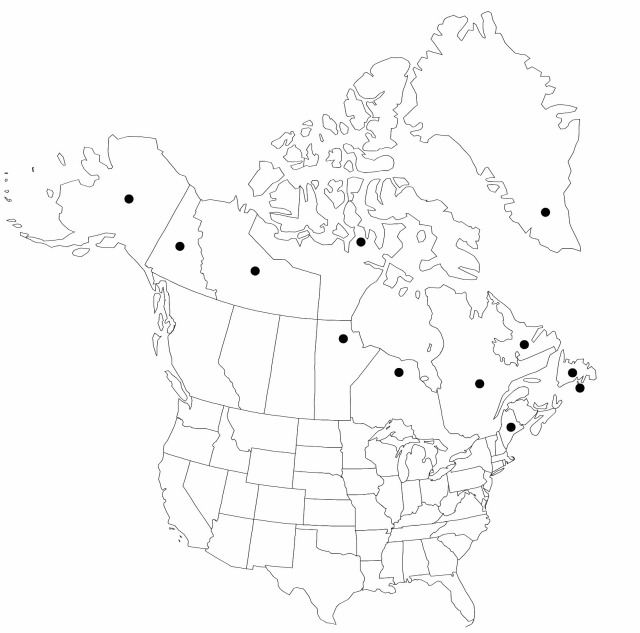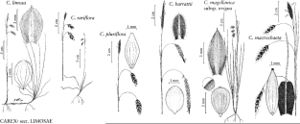Carex rariflora
in J. E. Smith and J. Sowerby, Engl. Bot., plate 2516. 1813.
Culms phyllopodic, with dead leaf remains at base, 5–35 cm. Leaf blades 1–2.5 mm wide, margins sometimes involute, scabrid at tip. Inflorescences: proximal bracts 0.5-2 cm, much shorter than inflorescences; lateral spikes 6–15 × 3.5–5 mm, with 2–10 perigynia; terminal spikes 6–20 × 1–2.5 mm. Pistillate scales circular-ovate, 3–4.8 × 2.2–3.4 mm, long as and wider than perigynia, apex obtuse, sometimes mucronate. Staminate scales oblanceolate to obovate, 3.2–4.8 × 1.5–2 mm, apex acute to obtuse. Anthers 2–2.5 mm. Perigynia 2.5–4.5 × 1.6–2 mm, apex rounded; beak absent. 2n = 52.
Phenology: Fruiting summer.
Habitat: Open bogs, meadows, seepage slopes, heath
Elevation: 0–500 m
Distribution

Greenland, St. Pierre and Miquelon, Man., Nfld. and Labr., N.W.T., Nunavut, Ont., Que., Yukon, Alaska, Maine, subarctic Eurasia.
Discussion
Selected References
None.
